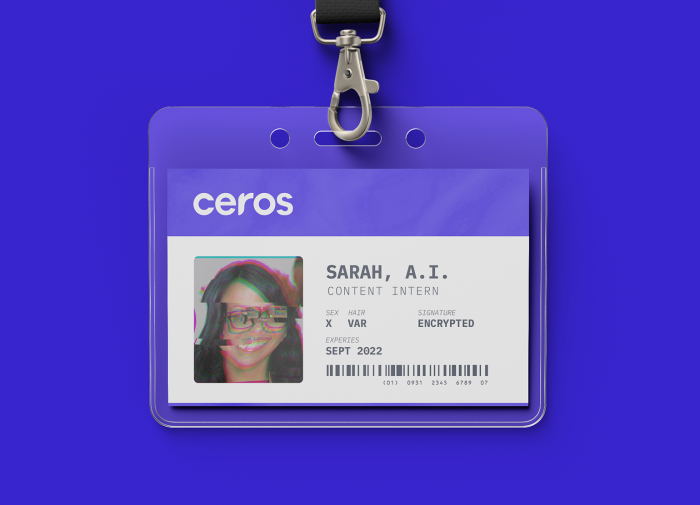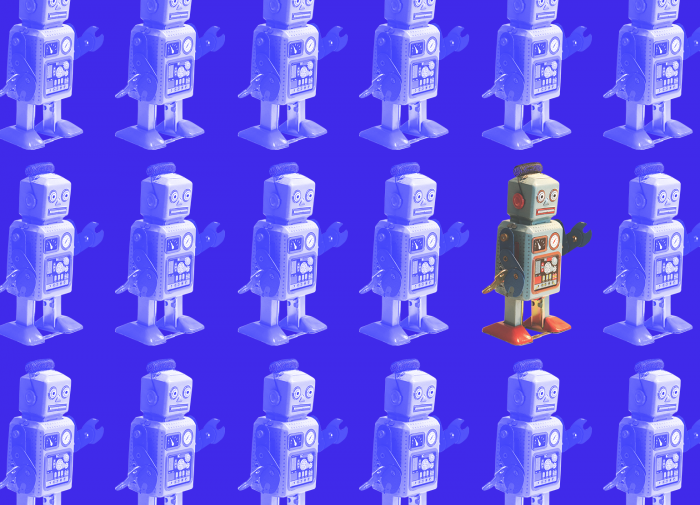Last month, the App Store’s top-downloaded app in America promised to change a familiar medium: the selfie. But instead of fine-tuning your close-ups or adding moody filters, Lensa AI creates brand-new digital portraits from existing photos—and styles range from the Renaissance to Disney royalty. The striking detail and quality churned out by the app have users marveling, sharing the results widely, and, occasionally, wondering if this isn’t all a little creepy.
Artificial intelligence (AI) has quickly moved from a possibility to a reality, a set of tools with very real applications available at our fingertips.
In 2022, the general public got access to two tools, OpenAI’s DALL-E 2 and the independent research lab Midjourney, which render any text you choose into realistic—or, at the very least, entertaining—images in mere seconds. And when it comes to the written word, there’s also OpenAI’s ChatGPT, capable of turning a one-sentence brief into a dozen taglines in the time it takes to say “brainstorm.”
As a designer, this whirlwind of development might make you scratch your head. Which AI tools are here to help? How will workflows change, and what parts of your job are actually at risk of full automation? While it’s still early, let’s explore the current state of AI and design.
What AI can really do for you
Despite the flashy examples you’ve likely seen on social media lately, some of AI’s most crucial capabilities for creatives come simply by cutting out mundane, time-consuming tasks.
Take Adobe Sensei, for instance. It was released five years ago to help solve the problems of image library overload and soften the never-ending demands on designers to meet image specs. To do it, Sensei offers Smart Tags, a service that auto-generates keywords for photographs rather than making you do it all manually. Drawing from 100,000 available tags, a senior scientist at Adobe described the tool as a way to turn “a black hole of images” into something a little more manageable.
Another popular option is Uizard, which uses screenshots to develop consistent themes and templates for prototyping websites, apps, and other interfaces.
Some designers leverage brand-new AI tools to reduce the monotony of carrying out the early stages of a project by hand. Sarah Drummond, who works as a service designer, told the New York Times that using DALL-E 2 for preliminary sketches of a checkout concept saves her serious time. “All of a sudden, I can take like 15 seconds and go, ‘Woman at till, standing at kiosk, black-and-white illustration,’ and get something back,” she said.
For freelancers and those tasked with providing detailed plans alongside the work of designing, ChatGPT might help free up space, too. While there’s still some refining to do, check out the project plan it developed in a few seconds:
 Helping hand or replacement?
Helping hand or replacement?
While you could theoretically rely on a mix of chatbots and AI image generators to cover all your bases, most industry veterans agree that human designers aren’t going anywhere. A design process using only AI and machine learning (ML) is cumbersome, and it doesn’t deliver a final product that you’d necessarily want to show a client.
According to Jason Carmel, an executive at global ad agency Wunderman Thompson, formulating useful prompts is a skillset all its own—and without it, you’ll quickly realize that AI tools can be “a time suck.” Drummond, the service designer, also noted that she wouldn’t use AI for her final output.
At Ceros, we tried it out for ourselves with an AI intern named Sarah. The tasks started out simply enough, as we asked her to dig up a few images for a story and draft some promotional tweets (she was an intern, after all). Despite some slightly spammy copy, she performed pretty well on the basics. But when it came time to offer up big-picture design concepts for a rebrand and develop original story ideas, we had to provide more and more inputs. Even so, the result was a little generic.
All in all, our AI intern’s performance lined up with Carmel’s assessment: AI and ML provide a good way to get the ball rolling on ideas, but they’re no stand-in for an art department. Plus, there’s no guarantee you’ll save time.
Although these technologies will keep getting more sophisticated, human ideas are just as valuable as ever. Making a design really stand out, after all, requires understanding what resonates with viewers and target audiences. As Alif Ibrahim suggested in a column for It’s Nice That, it’s important to “take a step back and see design not just as an event of visual execution, but as a way to engage with our environment.”
AI is complicated, and so are its effects. So breathe a sigh of relief, hone your strategy for speaking to chatbots, or add a few more tools to your creative stack. Whatever you do, don’t hold your breath for a computer takeover just yet.


